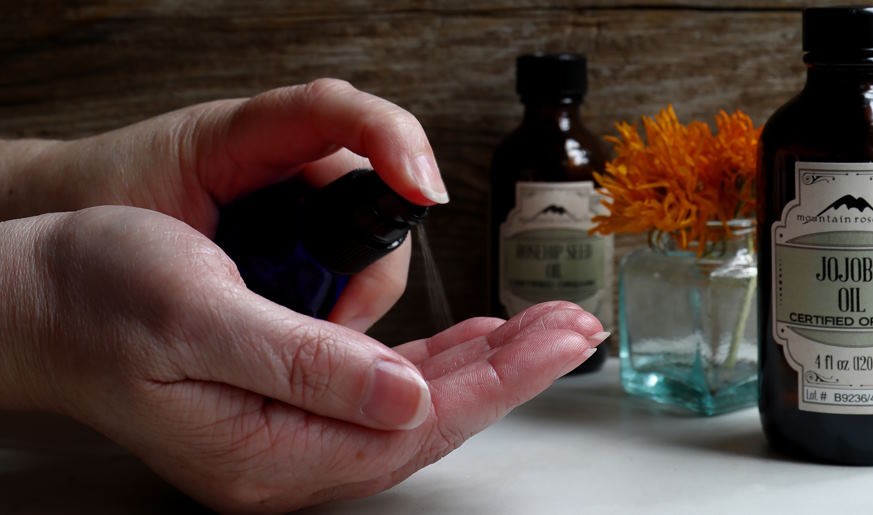Our skin is the largest organ of our body and plays a crucial role in protecting us from external factors such as pollution and UV rays. Therefore, it’s essential to take care of our skin and keep it nourished and hydrated. Facial oils have become increasingly popular in recent years, and for a good reason. They are a natural and effective way to moisturize and rejuvenate your skin. In this guide, we’ll cover everything you need to know about facial oils, from their benefits to how to choose the right one for your skin type. Whether you’re a skincare enthusiast or a beginner, this guide will help you take the first steps towards healthier, radiant skin. So, let’s get started!
Incorporating Facial Oils into Your Skincare Routine
Incorporating facial oils into your skincare routine can provide a wide range of benefits for your skin, including hydration, nourishment, and improved texture. However, to get the most out of your facial oil, it’s important to apply it correctly and at the right time. Here are some tips to help you make the most of your facial oil:
How to apply facial oils correctly:
When applying facial oil, less is more. Start with a small amount, about 3-4 drops, and warm it up between your palms before gently pressing it onto your face. Be sure to distribute the oil evenly across your face, neck, and décolletage. You can also use a facial roller or gua sha tool to help the oil penetrate deeper into your skin.
Best times to apply facial oils:
Facial oils can be applied at any time of day, but it’s best to use them after cleansing and toning your skin, as this will help the oil to penetrate more deeply. You can also use facial oil in place of your moisturizer, or layer it on top of your moisturizer for added hydration. Some people also like to use facial oil before bed as a part of their nighttime skincare routine, as this allows the oil to work its magic while you sleep.
Tips for getting the most out of your facial oil:
To really get the most out of your facial oil, it’s important to choose the right oil for your skin type. If you have dry skin, look for oils that are rich in fatty acids, like avocado oil or rosehip oil. If you have oily skin, choose lighter oils, like jojoba oil or grapeseed oil. And if you have sensitive skin, look for oils that are gentle and non-irritating, like chamomile oil or argan oil.
Another tip for getting the most out of your facial oil is to use it as a part of a holistic skincare routine. This means taking care of your skin from the inside out, by drinking plenty of water, eating a healthy diet, and getting enough sleep. By nourishing your skin from both the inside and outside, you can achieve a radiant, healthy glow.
In summary, incorporating facial oils into your skincare routine can be a game changer for your skin. By applying the oil correctly, at the right time, and choosing the right oil for your skin type, you can nourish and hydrate your skin for a healthy, radiant glow. Don’t be afraid to experiment with different oils and find what works best for you!

Top Facial Oils for Different Skin Types
Facial oils are a great way to nourish and hydrate your skin, but it’s important to choose the right oil for your skin type. Here are some top facial oils for different skin types:
Facial oils for dry skin:
If you have dry skin, you’ll want to look for facial oils that are rich in fatty acids and other nourishing ingredients. Some great options include:
- Avocado oil: Rich in vitamins A and E, avocado oil is great for hydrating and nourishing dry skin.
- Rosehip oil: Packed with antioxidants and essential fatty acids, rosehip oil can help improve skin texture and tone.
- Argan oil: This non-greasy oil is rich in vitamin E and fatty acids, making it a great choice for hydrating and nourishing dry skin.
Facial oils for oily skin:
If you have oily skin, you may be hesitant to use facial oil, but don’t worry – there are oils that can actually help balance and regulate oil production. Here are some top picks:
- Jojoba oil: This lightweight oil is great for oily skin, as it closely resembles the skin’s natural sebum and can help regulate oil production.
- Grapeseed oil: Another lightweight option, grapeseed oil is high in linoleic acid, which can help balance oil production and improve skin texture.
- Tea tree oil: Known for its antimicrobial properties, tea tree oil can help reduce oiliness and fight acne.
Facial oils for combination skin:
If you have combination skin, you’ll want to look for facial oils that can hydrate dry areas without clogging pores in oily areas. Here are some great options:
- Hemp seed oil: This lightweight oil is high in omega-3 and omega-6 fatty acids, making it great for hydrating dry skin without clogging pores.
- Tamanu oil: Rich in antioxidants and anti-inflammatory compounds, tamanu oil can help balance oil production while also soothing dry, irritated skin.
- Marula oil: This lightweight oil is high in antioxidants and can help improve skin texture and tone, making it a great choice for combination skin.
Facial oils for sensitive skin:
If you have sensitive skin, you’ll want to choose facial oils that are gentle and non-irritating. Here are some great options:
- Chamomile oil: Known for its soothing properties, chamomile oil can help calm and soothe sensitive skin.
- Squalane oil: This lightweight oil is similar to the skin’s natural sebum and is great for hydrating and nourishing sensitive skin.
- Calendula oil: Rich in antioxidants and anti-inflammatory compounds, calendula oil can help soothe and calm sensitive skin.
In summary, choosing the right facial oil for your skin type can help you achieve a healthy, radiant glow. Whether you have dry, oily, combination, or sensitive skin, there is an oil out there that can help nourish and hydrate your skin. Don’t be afraid to experiment and find what works best for you!

FAQs About Facial Oils
If you’re new to using facial oils, you may have some questions. Here are some common FAQs about facial oils:
Can facial oils cause breakouts?
Facial oils can actually help prevent breakouts by balancing oil production and hydrating the skin. However, some oils may be comedogenic, meaning they can clog pores and cause breakouts. If you have acne-prone skin, look for non-comedogenic oils like jojoba oil, grapeseed oil, or tea tree oil.
How do I apply facial oil?
To apply facial oil, start with a clean, dry face. Place a few drops of oil into the palm of your hand and then use your fingers to gently massage the oil into your face, neck, and décolletage. You can also mix a few drops of oil into your moisturizer for added hydration.
How long does a bottle of facial oil typically last?
The lifespan of a bottle of facial oil depends on the size of the bottle and how often you use it. A typical bottle of facial oil contains around 30ml of product and can last anywhere from one to six months, depending on how often you use it.
Can I use facial oil if I have oily skin?
Yes! Oily skin can benefit from using facial oil, as it can help balance oil production and hydrate the skin. Look for lightweight oils like jojoba oil or grapeseed oil that won’t clog pores.
Can I use facial oil if I have sensitive skin?
Yes, facial oil can be great for sensitive skin, as long as you choose an oil that is gentle and non-irritating. Look for oils like chamomile oil or squalane oil that are known for their calming and soothing properties.
In summary, facial oils can be a great addition to your skincare routine, as long as you choose the right oil for your skin type and use it correctly. Don’t be afraid to experiment and find what works best for you!

 Our team of beauty experts has years of experience in the industry and is dedicated to sharing their expertise with you. From the latest makeup trends to tips on how to achieve a perfect hairstyle, we have you covered. We also provide in-depth reviews and recommendations on the best beauty products in the market.
Our team of beauty experts has years of experience in the industry and is dedicated to sharing their expertise with you. From the latest makeup trends to tips on how to achieve a perfect hairstyle, we have you covered. We also provide in-depth reviews and recommendations on the best beauty products in the market.



